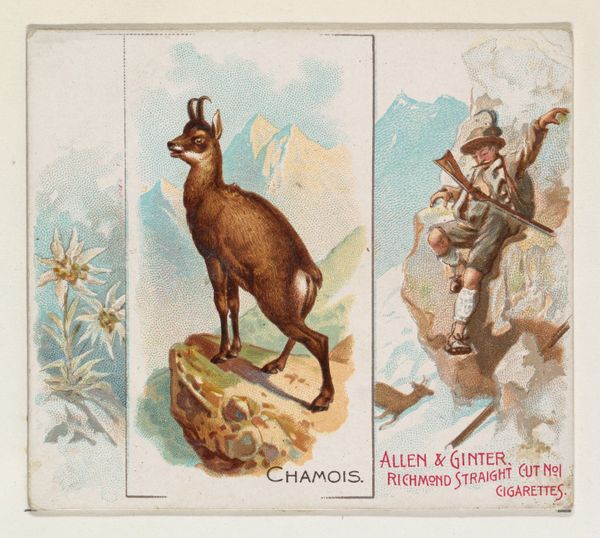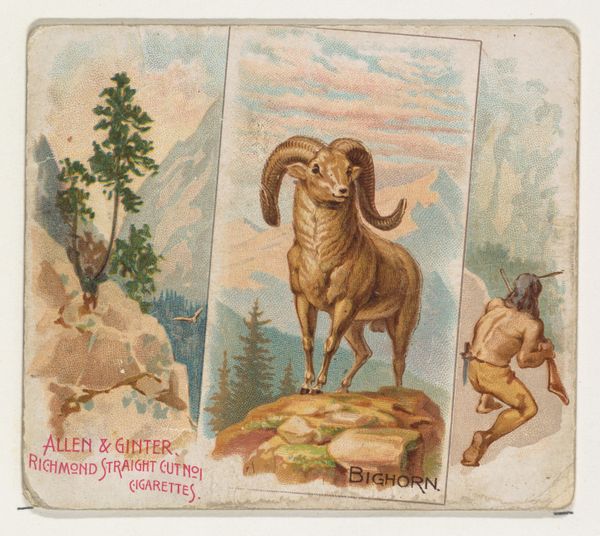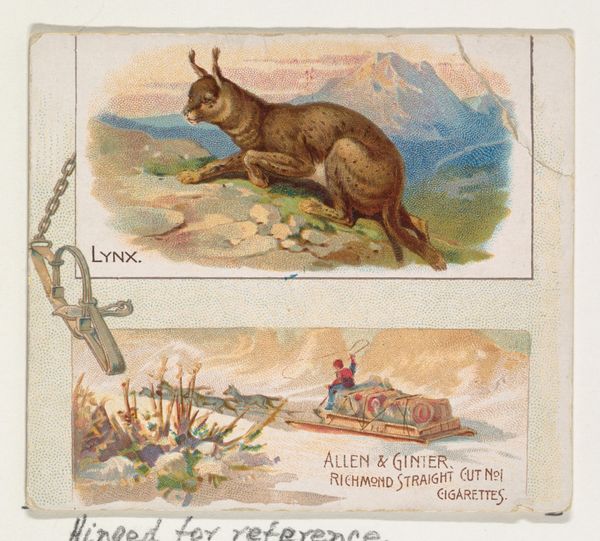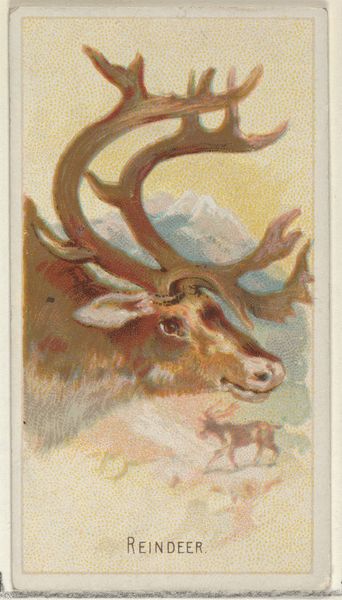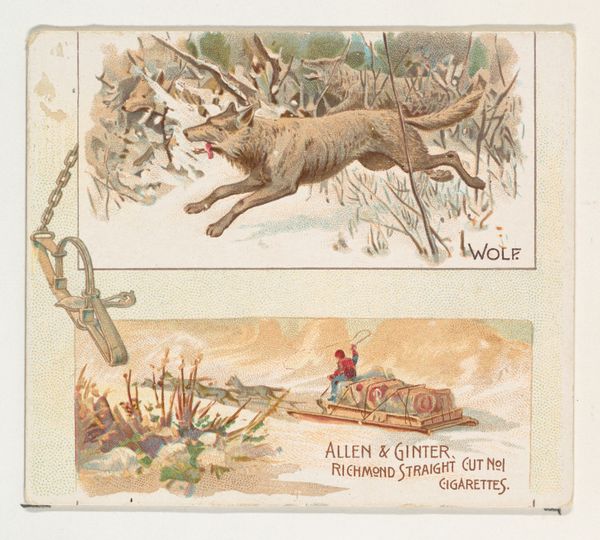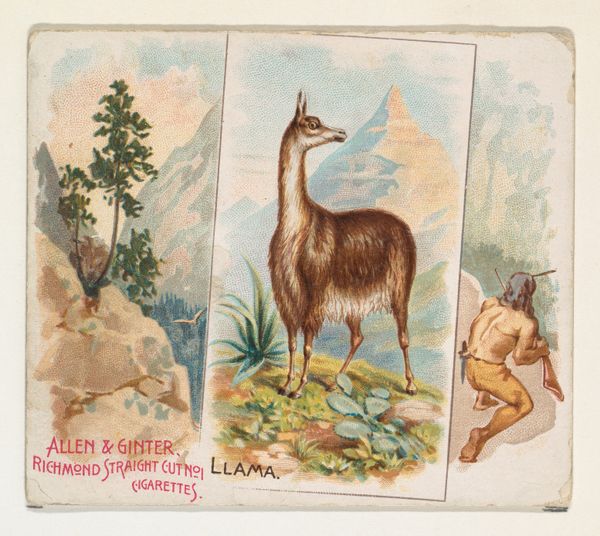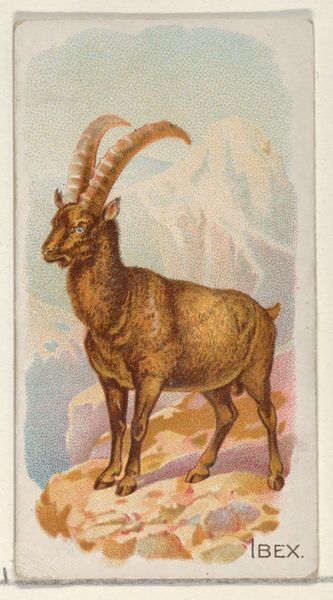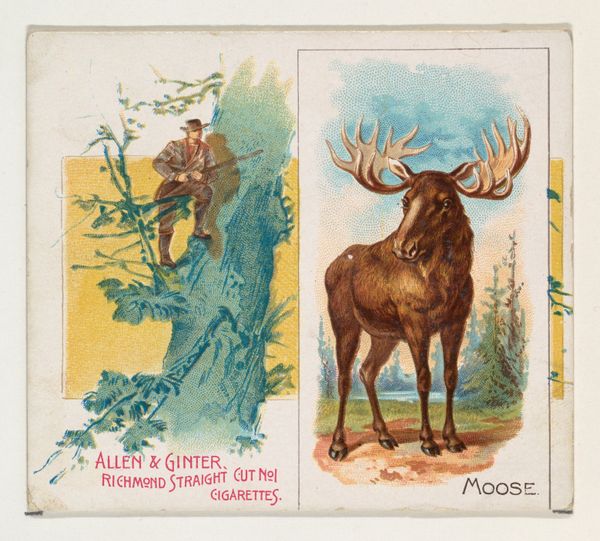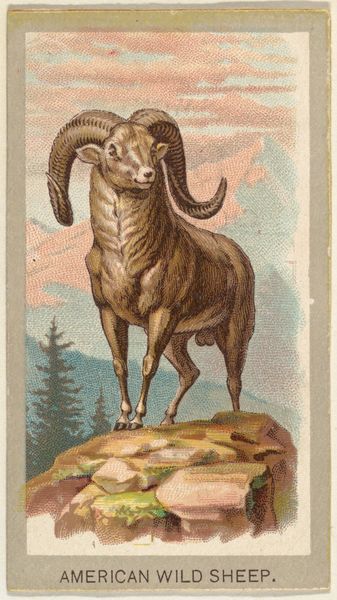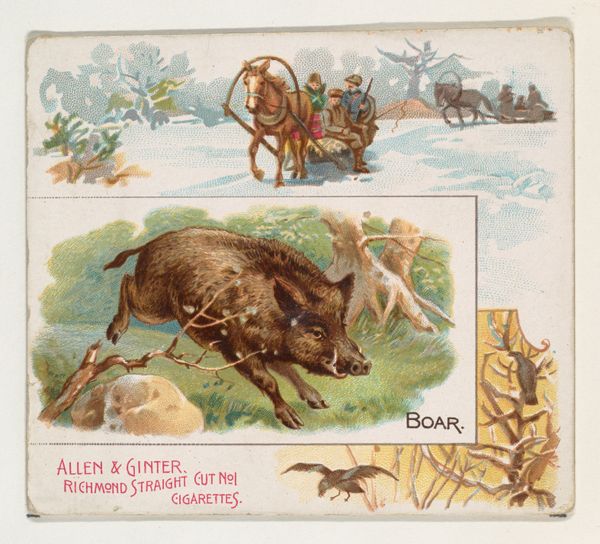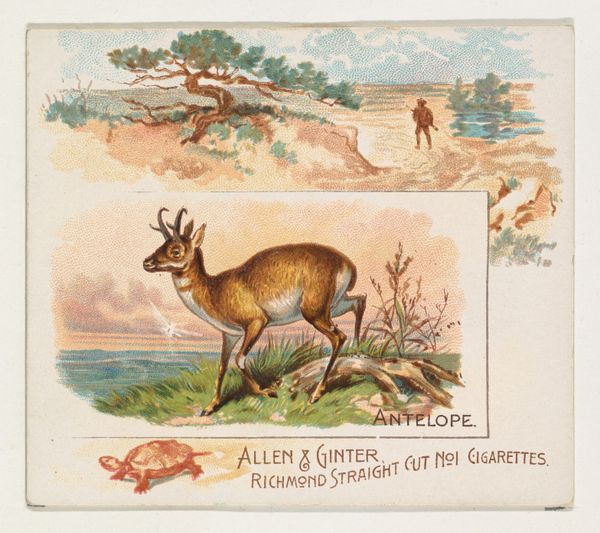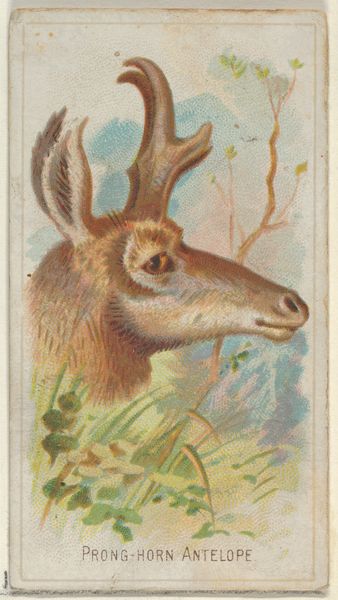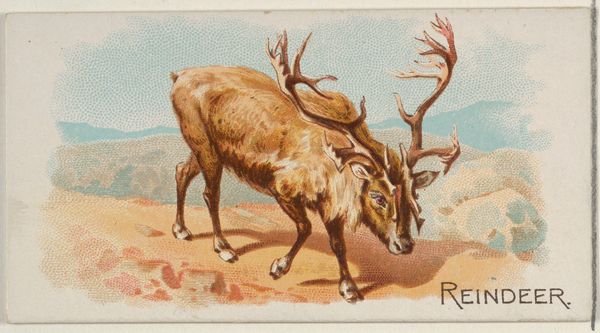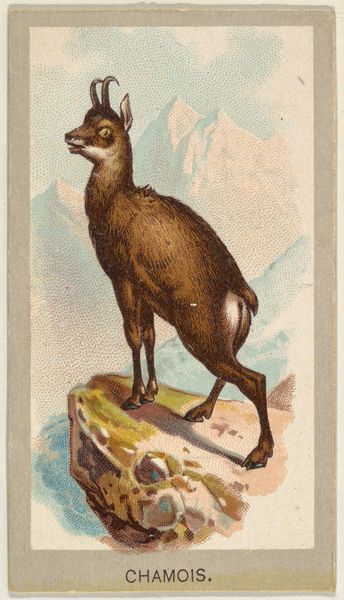
Ibex, from Quadrupeds series (N41) for Allen & Ginter Cigarettes 1890
0:00
0:00
drawing, coloured-pencil, print
#
drawing
#
coloured-pencil
#
water colours
# print
#
landscape
#
coloured pencil
#
miniature
Dimensions: Sheet: 2 7/8 x 3 1/4 in. (7.3 x 8.3 cm)
Copyright: Public Domain
Editor: This is "Ibex, from Quadrupeds series (N41) for Allen & Ginter Cigarettes," dated 1890. It’s a colored pencil drawing, and it strikes me as a curious blend of wildlife illustration and… advertising. The composition, split into these distinct panels, is so unusual. What do you make of its historical context and meaning? Curator: It's fascinating how this miniature print, originally part of a cigarette card series, reveals shifting cultural values. Consider the rise of consumer culture in the late 19th century: tobacco companies like Allen & Ginter used these cards as promotional tools. They distributed art directly into the hands of the masses. It made collecting art an incentive. The Ibex itself seems an unlikely figure of mass appeal, does it not? Editor: That's interesting. The Ibex appears dignified. Also there's the second frame which represents... leisure? Curator: Precisely. The pairing highlights both natural and human domains – wild animals against the backdrop of adventurous consumption. The cigarette card almost acts as a small window into idealized exotic worlds. Notice also how it subtly connects to imperial themes: wildlife being “discovered,” cataloged and “captured,” much like territories in that era? What do you think that reflects of its impact as visual culture? Editor: So it is not just about appreciating nature, but also projecting power and control. And in a way, making these animals into collectable objects through the cigarette cards? Curator: Exactly. It speaks volumes about how popular culture and even the most unassuming commercial images participate in shaping larger socio-political narratives. I find these to be poignant examples of material culture with lasting relevance. Editor: I had not thought of it that way at all. Thinking about what is shown, but also the purpose it was produced for helps add layers of meaning. Curator: And thinking of accessibility through these objects is powerful and changes our thinking about what constitutes “art.”
Comments
No comments
Be the first to comment and join the conversation on the ultimate creative platform.
